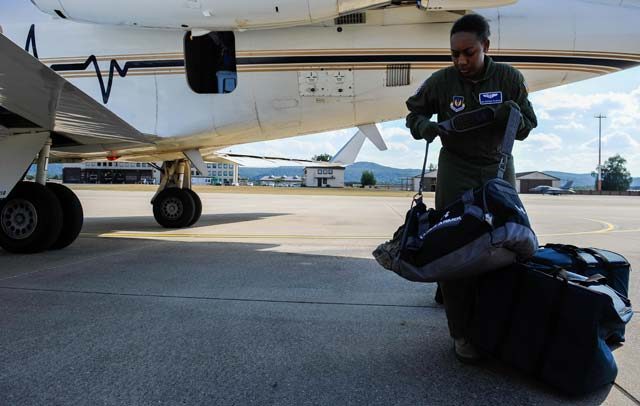
Airmen from the 86th Aeromedical Evacuation Squadron successfully transported an injured Airman during an aeromedical evacuation mission Sept. 1.
The Airman required immediate care midtour, during a deployment to Niger, that was unavailable at the deployed location and arrived at Ramstein on a Gulfstream III, giving the 86 AES minutes to transport the patient to the Landstuhl Regional Medical Center for treatment.
The mission demonstrated the efficiency of the 86 AES Airmen, said Senior Airman Luke Walter, 86 AES mission launch aeromedical evacuation technician.
“Everyone did an excellent job and worked well together with zero errors,” Walter said. “Because of the professionalism of the crew, mission planners and mission launch, every aspect of the mission went seamlessly.”
Aerospace medical service specialists assist doctors and care for patients in a wide range of situations. From administering immunizations to assisting in aeromedical evacuations, these highly skilled professionals supply critical support and are valuable members of any health care team.
These situations sometimes require the help of civilian aircraft to accomplish the mission.
“According to the aeromedical evacuation control team regulation, when military assets are not available, we contact civilian airlines,” said Capt. Shailu Joshi, 86 AES current operations officer in charge. “This allows us to procure an aircraft to aid our service members in need without having to contract out to an all-civilian crew.”
One of the crew members that helped transport the injured patient, Senior Airman Brionna Coleman, 86 AES mission launch aeromedical evacuation technician, relishes in the fact that her training prepared her for events such as these.
“We have to be prepared to fly on five different aircraft at any given time here,” Coleman said. “Our training teaches us that being flexible is very important. Although it is a little different interacting with civilians, we appreciate the support and opportunity to fly on their aircraft. They enhance patient care and provide a quiet and comfortable environment for the patient.”
This situation is a learning experience for those involved and will only help Team Ramstein continue to stay “Forward, Ready, Now” for future operations.


